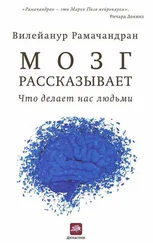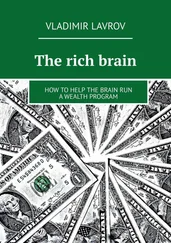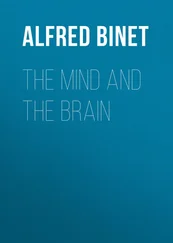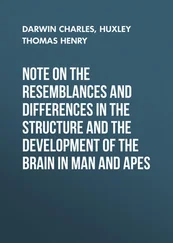There is something distinctly odd about a hairless neotenous primate that has evolved into a species that can look back over its own shoulder and ask questions about its origins. And odder still, the brain can not only discover how other brains work but also ask questions about its own existence: Who am I? What happens after death? Does my mind arise exclusively from neurons in my brain? And if so, what scope is there for free will?
It is the peculiar recursive quality of these questions — as the brain struggles to understand itself — that makes neurology fascinating.
By the deficits, we may know the talents, by the exceptions, we may discern the rules, by studying pathology we may construct a model of health. And — most important — from this model may evolve the insights and tools we need to affect our own lives, mold our own destinies, change ourselves and our society in ways that, as yet, we can only imagine.
—Laurence Miller
The world shall perish not for lack of wonders, but for lack of wonder.
—J.B.S. Haldane
CHAPTER 1
The Phantom Within
For in and out, above, about, below, ’Tis nothing but a Magic Shadow-show Play’d in a Box whose Candle is the Sun, Round which we Phantom Figures come and go.
—The Rubáiyát of Omar Khayyám
I know, my dear Watson, that you share my love of all that is bizarre and outside the conventions and humdrum routines of everyday life.
—Sherlock Holmes
A man wearing an enormous bejeweled cross dangling on a gold chain sits in my office, telling me about his conversations with God, the “real meaning” of the cosmos and the deeper truth behind all surface appearances.
The universe is suffused with spiritual messages, he says, if you just allow yourself to tune in. I glance at his medical chart, noting that he has suffered from temporal lobe epilepsy since early adolescence, and that is when “God began talking” to him. Do his religious experiences have anything to do with his temporal lobe seizures?
An amateur athlete lost his arm in a motorcycle accident but continues to feel a “phantom arm” with vivid sensations of movement. He can wave the missing arm in midair, “touch” things and even reach out and “grab” a coffee cup. If I pull the cup away from him suddenly, he yelps in pain. “Ouch! I can feel it being wrenched from my fingers”, he says, wincing.
A nurse developed a large blind spot in her field of vision, which is troubling enough. But to her dismay, she often sees cartoon characters cavorting within the blind spot itself. When she looks at me seated across from her, she sees Bugs Bunny in my lap, or Elmer Fudd, or the Road Runner. Or sometimes she sees cartoon versions of real people she’s always known.
A schoolteacher suffered a stroke that paralyzed the left side of her body, but she insists that her left arm is not paralyzed. Once, when I asked her whose arm was lying in the bed next to her, she explained that the limb belonged to her brother.
A librarian from Philadelphia who had a different kind of stroke began to laugh uncontrollably. This went on for a full day, until she literally died laughing.
And then there is Arthur, a young man who sustained a terrible head injury in an automobile crash and soon afterward claimed that his father and mother had been replaced by duplicates who looked exactly like his real parents. He recognized their faces but they seemed odd, unfamiliar. The only way Arthur could make any sense out of the situation was to assume that his parents were impostors.
None of these people is “crazy”; sending them to psychiatrists would be a waste of time. Rather, each of them suffers from damage to a specific part of the brain that leads to bizarre but highly characteristic changes in behavior. They hear voices, feel missing limbs, see things that no one else does, deny the obvious and make wild, extraordinary claims about other people and the world we all live in. Yet for the most part they are lucid, rational and no more insane than you or I.
Although enigmatic disorders like these have intrigued and perplexed physicians throughout history, they are usually chalked up as curiosities — case studies stuffed into a drawer labeled “file and forget”. Most neurologists who treat such patients are not particularly interested in explaining these odd behaviors. Their goal is to alleviate symptoms and to make people well again, not necessarily to dig deeper or to learn how the brain works. Psychiatrists often invent ad hoc theories for curious syndromes, as if a bizarre condition requires an equally bizarre explanation. Odd symptoms are blamed on the patient’s upbringing (bad thoughts from childhood) or even on the patient’s mother (a bad nurturer). Phantoms in the Brain takes the opposite viewpoint. These patients, whose stories you will hear in detail, are our guides into the inner workings of the human brain — yours and mine. Far from being curiosities, these syndromes illustrate fundamental principles of how the normal human mind and brain work, shedding light on the nature of body image, language, laughter, dreams, depression and other hallmarks of human nature. Have you ever wondered why some jokes are funny and others are not, why you make an explosive sound when you laugh, why you are inclined to believe or disbelieve in God, and why you feel erotic sensations when someone sucks your toes? Surprisingly, we can now begin to provide scientific answers to at least some of these questions. Indeed, by studying these patients, we can even address lofty “philosophical” questions about the nature of the self: Why do you endure as one person through space and time, and what brings about the seamless unity of subjective experience? What does it mean to make a choice or to will an action? And more generally, how does the activity of tiny wisps of protoplasm in the brain lead to conscious experience?
Philosophers love to debate questions like these, but it’s only now becoming clear that such issues can be tackled experimentally. By moving these patients out of the clinic and into the laboratory, we can conduct experiments that help reveal the deep architecture of our brains. Indeed, we can pick up where Freud left off, ushering in what might be called an era of experimental epistemology (the study of how the brain represents knowledge and belief) and cognitive neuropsychiatry (the interface between mental and physical disorders of the brain), and start experimenting on belief systems, consciousness, mind-body interactions and other hallmarks of human behavior.
I believe that being a medical scientist is not all that different from being a sleuth. In this book, I’ve attempted to share the sense of mystery that lies at the heart of all scientific pursuits and is especially characteristic of the forays we make in trying to understand our own minds. Each story begins with either an account of a patient displaying seemingly inexplicable symptoms or a broad question about human nature, such as why we laugh or why we are so prone to self-deception. We then go step by step through the same sequence of ideas that I followed in my own mind as I tried to tackle these cases. In some instances, as with phantom limbs, I can claim to have genuinely solved the mystery. In others — as in the chapter on God — the final answer remains elusive, even though we come tantalizingly close. But whether the case is solved or not, I hope to convey the spirit of intellectual adventure that accompanies this pursuit and makes neurology the most fascinating of all disciplines. As Sherlock Holmes told Watson, “The game is afoot!”
Consider the case of Arthur, who thought his parents were impostors. Most physicians would be tempted to conclude that he was just crazy, and, indeed, that is the most common explanation for this type of disorder, found in many textbooks. But, by simply showing him photographs of different people and measuring the extent to which he starts sweating (using a device similar to the lie detector test), I was able to figure out exactly what had gone wrong in his brain (see chapter 9). This is a recurring theme in this book: We begin with a set of symptoms that seem bizarre and incomprehensible and then end up — at least in some cases — with an intellectually satisfying account in terms of the neural circuitry in the patient’s brain. And in doing so, we have often not only discovered something new about how the brain works but simultaneously opened the doors to a whole new direction of research.
Читать дальше












